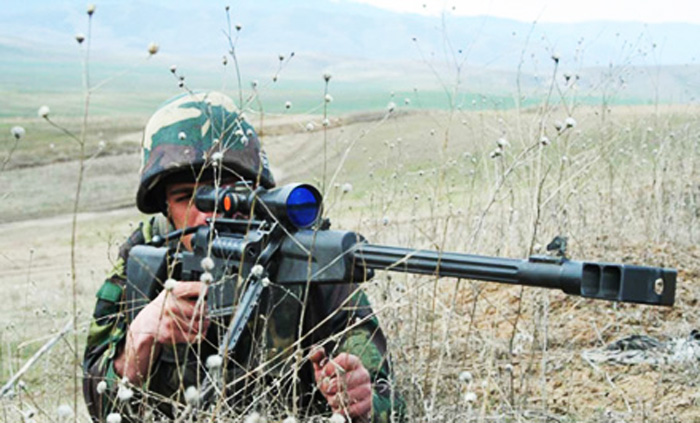The Azerbaijani army positions in Bala Jafarli, Gushchu Ayrim, Qaymaqli, Kamarli villages of Gazakh district underwent fire from the Armenian army positions located in Aygeovit village of Armenia’s Ijevan district and in Voskevan, Barekamavan villages of Noyemberyan district.
Meanwhile, the Azerbaijani army positions on nameless heights and in Alibeyli, Munjuglu village of Tovuz district were shelled from the Armenian army positions located on nameless heights and in Mosesgekh, Aygedzor, Chinari villages of Armenia’s Berd district.
The Azerbaijani army positions on nameless heights of Gadabay district also underwent fire from the Armenian army positions located on nameless heights of Krasnoselsk district of Armenia.
Moreover, the Azerbaijani army positions were shelled from the Armenian positions located near the Armenian-occupied Goyarkh, Chilaburt village of Tartar district, Garagashli, Marzili, Javahirli, Bash Garvand, Yusifjanli villages of Aghdam district, Kuropatkino village of Khojavand district, Gorgan, Garakhanbeyli, Ashaghi Veysalli and Ashaghi Seyidahmadli villages of Fuzuli district, as well as from the positions located on nameless heights of Goygol, Goranboy, Tartar and Khojavand districts of Azerbaijan.
The Nagorno-Karabakh conflict entered its modern phase when the Armenian SRR made territorial claims against the Azerbaijani SSR in 1988.
A fierce war broke out between Azerbaijan and Armenia over the Nagorno-Karabakh region of Azerbaijan. As a result of the war, Armenian Armed Forces occupied some 20 percent of Azerbaijani territory which includes Nagorno-Karabakh and seven adjacent districts (Lachin, Kalbajar, Aghdam, Fuzuli, Jabrayil, Gubadli and Zangilan), and over a million Azerbaijanis became refugees and internally displaced people.
The military operations finally came to an end when Azerbaijan and Armenia signed a ceasefire agreement in Bishkek in 1994.
Dealing with the settlement of the Nagorno-Karabakh conflict is the OSCE Minsk Group, which was created after the meeting of the CSCE (OSCE after the Budapest summit held in December 1994) Ministerial Council in Helsinki on 24 March 1992. The Group’s members include Azerbaijan, Armenia, Russia, the United States, France, Italy, Germany, Turkey, Belarus, Finland and Sweden.
Besides, the OSCE Minsk Group has a co-chairmanship institution, comprised of Russian, the US and French co-chairs, which began operating in 1996.
Resolutions 822, 853, 874 and 884 of the UN Security Council, which were passed in short intervals in 1993, and other resolutions adopted by the UN General Assembly, PACE, OSCE, OIC, and other organizations require Armenia to unconditionally withdraw its troops from Nagorno-Karabakh.
More about: #Azerbaijan #Armenia #ceasefire
















































